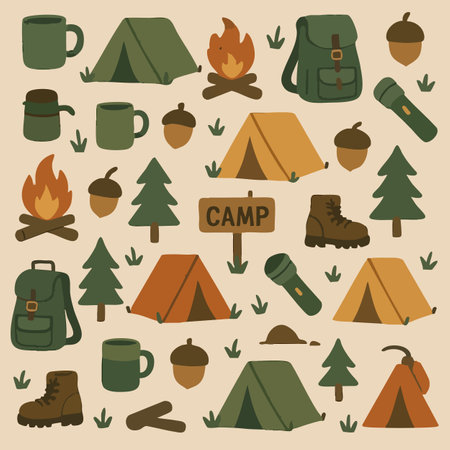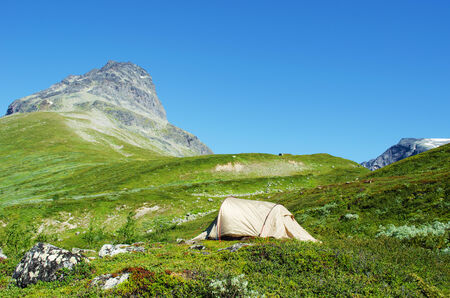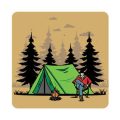Understanding the Basics of a Great Campsite
When planning a mountain camping trip with your family, the first step is understanding what makes a campsite truly great. Choosing the right spot isn’t just about the views—it’s about ensuring everyone’s safety, comfort, and enjoyment. Start by thinking about accessibility: Is the site easy to reach for both adults and kids? Look for clear, established trails that are well-marked and not too steep or challenging for little legs. Next, consider safety measures. Avoid areas that are prone to falling rocks, flash floods, or wildlife traffic. It’s smart to set up camp at least 200 feet from bodies of water and cliffs to keep everyone safe. Finally, focus on essential features that will make your stay memorable. A flat patch of ground for your tent, some natural shade, and enough space for camp activities can turn a simple night in the mountains into an unforgettable family adventure. With these basics in mind, you’ll be well on your way to finding the perfect mountain campsite.
2. Evaluating the Terrain: Safety and Comfort
Before you start setting up camp, it’s essential to take a close look at the ground where you plan to sleep. Mountain weather can change quickly, so picking a safe and comfortable spot will help your family have a restful night—and peace of mind. Here’s what to consider:
Assessing Ground Levelness and Stability
Choose an area that is as flat as possible for your tent. Sloped or uneven ground can lead to uncomfortable sleeping positions and increase the risk of rolling off your sleeping pad. Check for rocks, roots, and holes that might poke through your tent floor or cause trips in the dark. Gently press down with your hand or stomp lightly with your foot to test for soft spots or hidden puddles beneath the surface.
Terrain Comparison Table
| Terrain Type | Pros | Cons |
|---|---|---|
| Grassy Meadow | Soft ground, easy tent setup | May collect dew or get muddy after rain |
| Pine Needles | Cushioned surface, natural insulation | Can hide rocks/branches underneath |
| Sandy Soil | Good drainage, soft base | Tent stakes may not hold well |
| Rocky Patch | Stable during storms, minimal mud | Uncomfortable for sleeping, hard on gear |
Protection from Natural Hazards
Avoid low-lying areas where water can pool during rainstorms—these spots are prone to flooding. Stay clear of dry creek beds (called “arroyos” in some regions), as flash floods can happen even if it’s not raining overhead. Look above your campsite for loose rocks or dead tree branches (“widowmakers”) that could fall in windy conditions. Whenever possible, pitch your tent near natural windbreaks like bushes or boulders to shield against chilly gusts.
Quick Tips for Cozy Camping in the Mountains:
- Choose higher ground away from riverbanks and gullies.
- Test the soil with your tent stakes; firm but not rocky is ideal.
- If camping as a family, make sure there’s enough level space for everyone’s tents and a shared gathering area.
Selecting the right terrain helps ensure safety and comfort throughout your mountain adventure, making it easier to relax and enjoy those starry nights together.

3. Proximity to Water: Convenience and Caution
One of the most appealing aspects of mountain camping is waking up to the soothing sounds of a nearby stream or gazing at a sparkling lake under the stars. Setting up camp close to water has clear advantages, especially when it comes to convenience for cooking, cleaning, and drinking. However, it’s important to balance this ease with safety concerns and environmental responsibility.
Convenience of Water Access
Having water nearby makes daily camp chores easier for the whole family. Kids can help fetch water for meals, refill bottles after a hike, or even splash around (if safe). Just remember to always purify any water before drinking, since mountain streams can carry bacteria or parasites that aren’t visible to the eye.
Safety Comes First
While being close to water is handy, it also means thinking carefully about your campsite’s exact location. In American mountain regions, sudden rainstorms can cause streams to rise quickly, turning a peaceful spot into a hazard overnight. Always set up camp at least 200 feet from lakes and streams—this distance helps you avoid unexpected flooding and keeps you away from insect hotspots like mosquitoes.
Leave No Trace Principles
To keep America’s wild places beautiful for future generations, follow Leave No Trace guidelines by camping well away from water sources. This helps protect delicate shorelines and prevents erosion. Teach kids why it’s important not to wash dishes or use soap directly in natural water sources—use a container and dispose of wastewater at least 200 feet away.
Wildlife Awareness
Rivers and lakes are popular with animals looking for food and water too! Storing food securely and keeping a respectful distance reduces the chance of wildlife encounters at your site. Remind children never to approach wild animals or leave snacks unattended near the tent.
By weighing both convenience and caution, you’ll ensure your mountain campsite is comfortable, safe, and environmentally friendly—a perfect base for family adventures in America’s great outdoors!
4. Taking in the View: The Role of Scenery in Your Experience
When you’re choosing a mountain campsite, the view isn’t just about snapping that perfect sunrise photo—it’s about creating memorable moments with your family. A stunning vista can turn an ordinary camping trip into something truly magical, helping everyone unplug from screens and connect with nature and each other. Whether it’s watching the sunset over rolling hills or waking up to misty mountaintops, scenery plays a big role in setting the mood for your adventure.
Why Scenery Matters for Families
A beautiful view gives your family a sense of wonder and appreciation for the outdoors. Kids are naturally curious, and an inspiring landscape encourages them to explore, ask questions, and learn about their surroundings. For parents, a great view can be relaxing after a long hike, offering a peaceful spot to enjoy a cup of coffee or share stories around the campfire.
Balancing Views with Practical Needs
While breathtaking scenery is important, it’s also essential to make sure your campsite is safe and comfortable. Sometimes the best views are on exposed ridges or rocky outcrops, which may not be ideal for pitching a tent—especially with little ones in tow. Here’s a quick comparison to help you weigh your options:
Scenic Spot |
Practical Spot |
|---|---|
| Breathtaking views Unforgettable photos Inspiring atmosphere |
Sheltered from wind Flat ground for sleeping Close to water source |
| Potentially more exposed to weather May be farther from amenities |
May have limited views Easier access to essentials |
Tips for Finding the Best of Both Worlds
- Look for campsites near overlooks but sheltered by trees or rocks.
- If possible, set up camp in a practical location, then walk a short distance to enjoy panoramic views.
- Involve your kids in scouting for spots—they might discover hidden gems!
- Check local regulations: Some scenic spots may be off-limits or require permits.
The Takeaway
Amazing views can make your family camping trip unforgettable, but comfort and safety should always come first. With a little planning, you can find a campsite that offers both beauty and practicality—giving your family the best possible experience in the mountains.
5. Considering Weather and Shelter from the Elements
Mountain weather can change quickly, so it’s important to pick a campsite that keeps your family safe and comfortable. Start by looking for natural windbreaks—like groups of trees, large rocks, or gentle slopes—that can help shield your tent from strong gusts. These features not only block wind but also offer a sense of privacy and coziness for your group.
If you’re camping during warmer months, shade is another big factor. Try to find spots under tall trees or beside cliffs that provide relief from the midday sun, but make sure you’re not directly beneath dead branches that could fall in high winds (these are called “widowmakers”). In cooler weather, consider how morning sunlight will hit your campsite to warm everyone up after a chilly night.
Natural Shelters: Nature’s Protection
Use the landscape to your advantage. Set up camp on the leeward side of hills or ridges, where you’re less exposed to cold mountain breezes. Dense bushes and thick tree lines can also serve as barriers against rain and wind.
Keeping Your Family Comfortable
Always double-check the forecast before you leave, but be ready for surprises. Bring tarps or extra rain flies to cover gear and create dry spaces for meals or playtime if showers roll in. Teach kids how to spot good shelter spots and explain why safety comes first when picking a site.
Pro Tips for Mountain Families
Arrive early so you have time to survey the area and set up before any afternoon storms. Practice setting up your tent at home so everyone knows their role if you need to pitch it fast! With some planning and a little know-how, you’ll keep everyone safe—and make plenty of happy memories in the mountains.
6. Respecting Local Wildlife and Preserving the Environment
Choosing the perfect mountain campsite isn’t just about finding the best views or the most level ground—it’s also about showing respect for nature and protecting it for future generations. When camping in the mountains, it’s essential to foster positive outdoor ethics. Always keep a respectful distance from local wildlife; observing animals from afar not only keeps them safe but also prevents any unintentional harm or stress. Remember, you are a guest in their home.
Minimize Your Impact
Every camper leaves a mark, but it’s our responsibility to make that impact as small as possible. Stick to established trails and campsites whenever you can, as this helps preserve delicate vegetation and reduces soil erosion. Avoid picking plants or disturbing rocks and logs, which may be home to insects and small creatures. If you need to use soap for washing, opt for biodegradable options and make sure to wash at least 200 feet away from water sources to keep streams and lakes clean.
Pack It In, Pack It Out
A core rule of outdoor etiquette is “leave no trace.” Always pack out everything you bring in—including food wrappers, leftover food scraps, and even tiny bits of trash like bottle caps or twist ties. Before leaving your campsite, do a thorough sweep for anything left behind by your group. Teaching kids to help with this is a wonderful way to build their sense of stewardship for nature.
Set an Example for Young Campers
Children learn best by watching adults, so show them how to care for the environment by respecting wildlife, staying on trails, and cleaning up after themselves. Encourage them to ask questions about the animals they see and explain why we never feed wild creatures or try to approach them. By modeling these behaviors, you’ll help nurture lifelong outdoor lovers who value both adventure and responsibility.
Choosing your mountain campsite wisely includes making choices that honor the land and its inhabitants. With every trip, you have the opportunity to teach your family not just how to enjoy nature—but how to protect it too.


